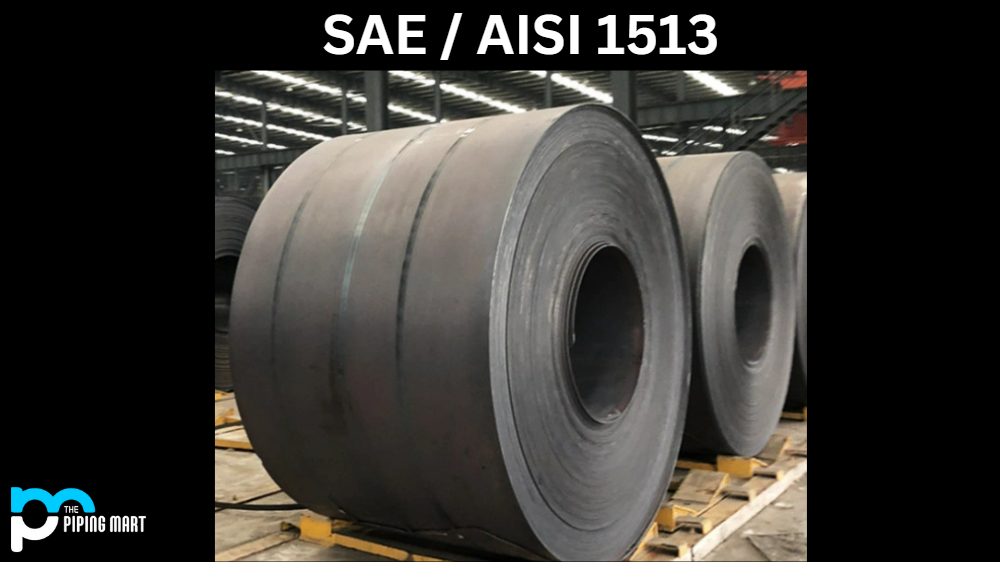SAE 1513, recognized for its low-carbon composition, offers commendable mechanical properties and machinability. Notably, it exhibits good corrosion and heat resistance, with the added advantage of being heat-treatable for enhanced strength and hardness. Also identified as AISI 1513 and UNS G15130, this steel alloy is a sought-after choice across diverse applications, from industrial machinery to construction equipment. The noteworthy high yield strength of AISI 1513 contributes to its resistance against deformation and wear. Furthermore, its good machinability allows easy welding and shaping into various forms; for those seeking an AISI 1513 equivalent, comparing its composition and properties with other carbon steels aids in determining the most suitable match for specific requirements.
What Forms of AISI 1513 is Available at Piping Mart?
- Nut
- Bar
- Bolt
- Pipe
- Screw
- Tubing
- Valves
- Washers
- Flanges
- Fasteners
- Electrodes
- Stud Bolts
- Sheet Plates
- Pipe Fittings
- Forged Fitting
- Instrumentation Fittings
AISI 1513 Composition
AISI 1513 steel, a low-carbon alloy, typically comprises about 0.100-0.160% Carbon, 1.10-1.40% Manganese, 0.0400% Phosphorus, and 0.0500% Sulfur. This composition contributes to its advantageous Mechanical Properties and Machinability. Its balanced blend makes AISI 1513 a preferred choice for applications requiring strength, durability, and ease of fabrication.
| Element | Content (%) |
|---|---|
| Iron, Fe | 98.35 – 98.8 |
| Manganese, Mn | 1.10 – 1.40 |
| Carbon, C | 0.100 – 0.160 |
| Sulfur, S | 0.0500 |
| Phosphorous, P | 0.0400 |
AISI 1513 Mechanical Properties
AISI 1513 steel demonstrates a modulus of elasticity ranging from 190 to 210 GPa and a Poisson’s ratio of approximately 0.27 to 0.30. These mechanical properties characterize its ability to deform under stress and provide insight into its behaviour in various engineering applications.
| Properties | Metric | Imperial |
|---|---|---|
| Modulus of elasticity | 190-210 GPa | 29700-30458 ksi |
| Poissons ratio | 0.27-0.30 | 0.27-0.30 |
AISI 1513 Physical Properties
AISI 1513 steel exhibits specific physical properties, including approximately 7.85 g/cm³ density. This characteristic is pivotal for understanding the steel’s mass properties, offering valuable information for engineering applications where precise knowledge of density is essential for design considerations and performance analysis.
| Properties | Metric | Imperial |
|---|---|---|
| Density | 7.7 – 8.03 g/cm³ | 0.278 – 0.290 lb/in³ |
AISI 1513 Thermal Properties
The thermal properties of AISI 1513 steel play a crucial role in its performance. These include thermal conductivity, which determines the material’s ability to conduct heat, and specific heat, indicating its capacity to store heat. These properties are essential considerations in various engineering applications with temperature-related requirements.
| Properties | Conditions | ||
|---|---|---|---|
| T (°C) | Treatment | ||
| Thermal Conductivity (W/m-K) | 42.7 | 100 | |
| Specific Heat (J/kg-K) | 477 | 50-100 | |
AISI 1513 Uses in Industries
- Automotive Industry
- Construction Equipment
- Agricultural Machinery
- Oil & Gas Industry
- Aerospace Applications
AISI 1513 Properties
SAE / AISI 1513 is low-carbon steel with a carbon content of 0.14-0.19%. This steel contains manganese, silicon, and sulfur as the main alloying elements. The following table shows the chemical composition of SAE / AISI 1513.
As you can see, SAE / AISI 1513 contains a relatively high amount of manganese compared to other carbon steels in its class. This gives the steel good toughness and strength while maintaining good ductility and machinability. In addition, this steel has good resistance to both corrosion and heat, making it suitable for a wide variety of applications. Let’s take a look at some of the most common uses for SAE / AISI 1513 below:
AISI 1513 Corrosion Resistance
SAE / AISI 1513 is a steel alloy renowned for its corrosion resistance. The alloy’s impressive ability to stand up against harsh weather and other elements makes it an excellent choice for a wide range of applications in industry, including for components found in chemical plants, offshore equipment, and nuclear power plants. The steel alloy has been proven better to resist the effects of corrosion than conventional low-carbon steels, resulting in greater longevity and durability. Beyond providing superior protection against general corrosion, SAE / AISI 1513 also resists pitting and high-temperature oxidation. With its protection against extreme temperatures and various chemical agents and acids, it stands as one of the most reliable steel alloys.
AISI 1513 Heat Resistance
SAE / AISI 1513 is a heat-resistant alloy that contains chromium and nickel. The alloy has a high melting point and is often used in high-temperature applications. The alloy is also resistant to scaling and corrosion.
AISI 1513 Machining
Machining with SAE / AISI 1513 can present a great challenge for some machinists, given its aggressive machining characteristics. It is a highly formable steel that needs to be cut slower than most other metals to maximize accuracy and reduce the risk of damaged cutting tools. The most significant challenges machinists face when working with this steel include managing high levels of heat generated during the process and chips that can stick to surfaces. It’s important to use cutting tools created explicitly for machining 1513, as its unique hardness often requires more intensive sharpening and stronger end-cutters for optimal performance. With the right machining technique, however, SAE / AISI 1513 can be an incredibly robust and reliable material in many different types of applications.
AISI 1513 Welding
AISI 1513 steel facilitates welding, displaying excellent weldability. This feature enables smooth integration across diverse applications. The steel’s positive welding attributes and overall mechanical properties establish it as a dependable option for manufacturing processes that demand effective welding and the production of robust components.
Conclusion
SAE-AISI 1513 Carbon Steel (UNS G15130) is a distinguished alloy known for its well-balanced composition, commendable mechanical properties, and superior weldability. It is widely applied in industrial machinery and construction equipment and is a reliable choice. This carbon steel’s combination of strength, durability, and ease of fabrication positions it as a versatile solution for diverse applications. Whether in machined parts or structural components, SAE-AISI 1513 proves its mettle, delivering consistent performance in demanding industrial scenarios.

A passionate metal industry expert and blogger. With over 5 years of experience in the field, Palak brings a wealth of knowledge and insight to her writing. Whether discussing the latest trends in the metal industry or sharing tips, she is dedicated to helping others succeed in the metal industry.




